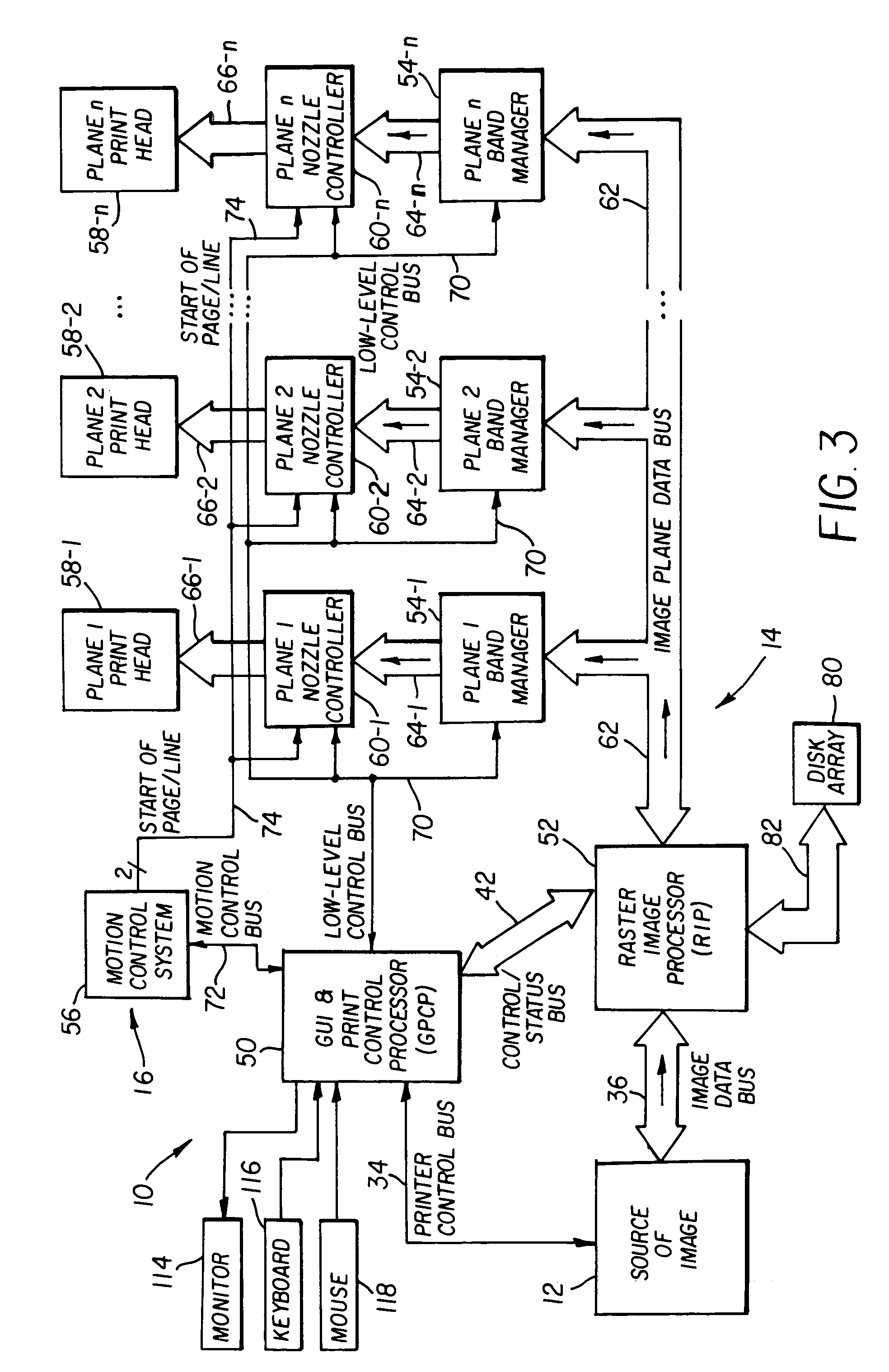Image processor for high-speed printing applications
a high-speed image processing and printing technology, applied in the field of printing devices, can solve the problem of image processors being bottlenecks, and achieve the effect of high-speed image processing
- Summary
- Abstract
- Description
- Claims
- Application Information
AI Technical Summary
Benefits of technology
Problems solved by technology
Method used
Image
Examples
Embodiment Construction
[0027]Referring to FIG. 1, there is shown a printing system 10 having an image source 12, an image processor 14, and a printer 16. The printer 16 comprises a motion control portion and print heads (not shown in FIG. 1). The present invention is directed to the image processor 14 at a very high, system architecture level. A primary application of this type of printing system 10 is the application of high-speed printing of photographs from digitized photographic images in a high-speed photo processing laboratory. However, it's application is not limited solely to the rendering of photographic prints. The present invention can also be used in applications such as the printing of wallpaper, large format graphics, such as banners, and other printing applications that would benefit from the increased graphics processing speed and other advantages of the present invention. The image source 12 is in circuit communication with the image processor 14 via at least one bus 20 and the image proc...
PUM
 Login to View More
Login to View More Abstract
Description
Claims
Application Information
 Login to View More
Login to View More - R&D
- Intellectual Property
- Life Sciences
- Materials
- Tech Scout
- Unparalleled Data Quality
- Higher Quality Content
- 60% Fewer Hallucinations
Browse by: Latest US Patents, China's latest patents, Technical Efficacy Thesaurus, Application Domain, Technology Topic, Popular Technical Reports.
© 2025 PatSnap. All rights reserved.Legal|Privacy policy|Modern Slavery Act Transparency Statement|Sitemap|About US| Contact US: help@patsnap.com



